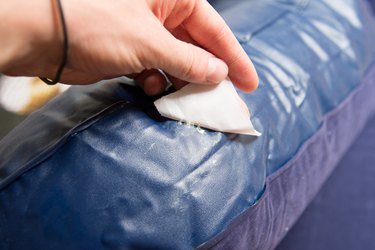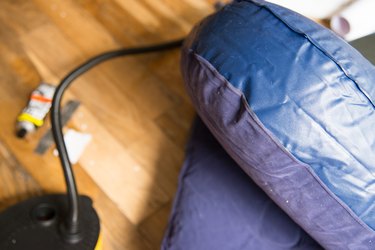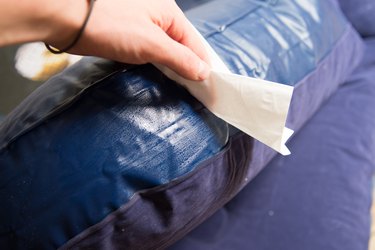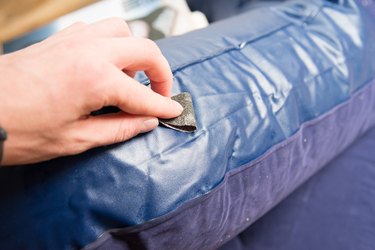Things You'll Need
Rubber (pieces to glue)
Dish soap
Rag
Paper towel
Sand paper (600 Grit)
Rubber cement (tube)
Cardboard scrap (paintbrush size)

The fact that rubber stretches makes it somewhat difficult to glue. The problem that most people find when gluing rubber is that the glue they use is not flexible, and the rubber will not stay attached because they are using the wrong glue or the wrong technique. Most people do not know that gluing rubber is simple and does not require exotic materials.
Step 1

Put the rubber pieces that you are going to glue under the same amount of stress that they will be under when glued. This means that you may need to stretch the rubber so that excessive stretching does not interfere with the adhesive. For example, if you are gluing an inner tube, you would want to inflate it at this point.
Video of the Day
Step 2

Wet the surface of the rubber where you intend to apply the glue. Apply dish soap to the wet rubber surface. With a rag, scrub the surface of the rubber to a lather. Rinse off the soap with a generous amount of water.
Step 3

Dry the surface of the rubber. Blot the area with a paper towel until there is no sign of wetness. Make sure that the surface of the area that you wish to glue is completely dry before applying the adhesive. Gluing rubber to a wet surface will interfere with the adhesive setting properly.
Step 4

Sand the surface of the area that you will glue with the sand paper. Make the surface rough so that the glue has a nice surface to which it can adhere. Do not make an indentation in the rubber; merely scuff the surface.
Step 5

Apply a thin layer of rubber cement to the surfaces that you wish to glue. Scrape away the excess with the scrap of cardboard. Press the surfaces into position. Allow the rubber cement to cure according to the instructions on the tube. Force out air bubbles to the edge of the patch by pressing them on one edge.
Tip
This method can also be used to patch holes in rubber if you glue a patch over a puncture or hole. This works best if both pieces of rubber have the same amount of stretchiness. People use this method to patch bicycle inner tubes. Rubber cement can also glue rubber to non-rubber objects if the adhesive will bond.
Warning
Wear goggles and follow all instructions that come with the rubber cement.
Work in a well ventilated location.
The rubber cement may not be appropriate for all applications, and the rubber may have to be melted together or replaced. Melting rubber is a dangerous activity and should only be attempted be a skilled expert.
Video of the Day